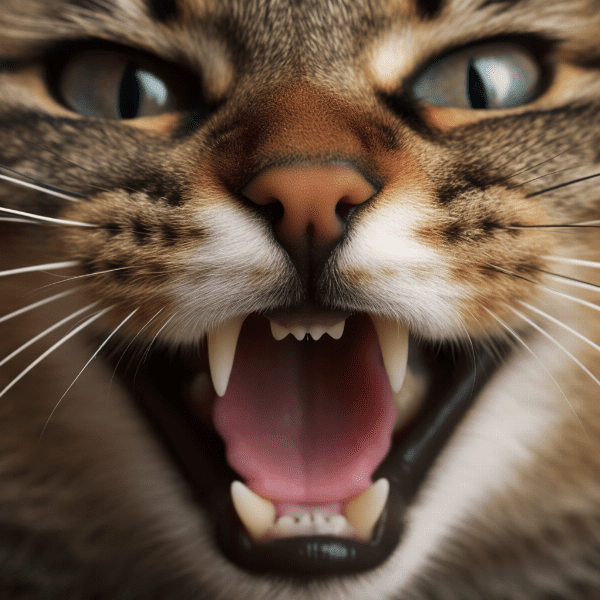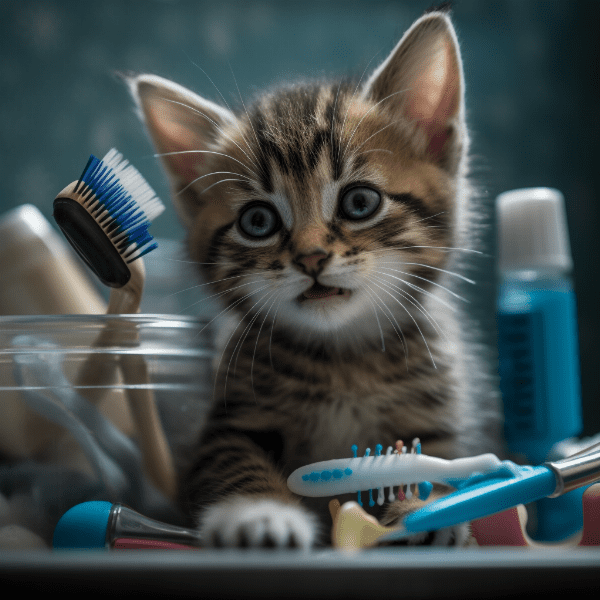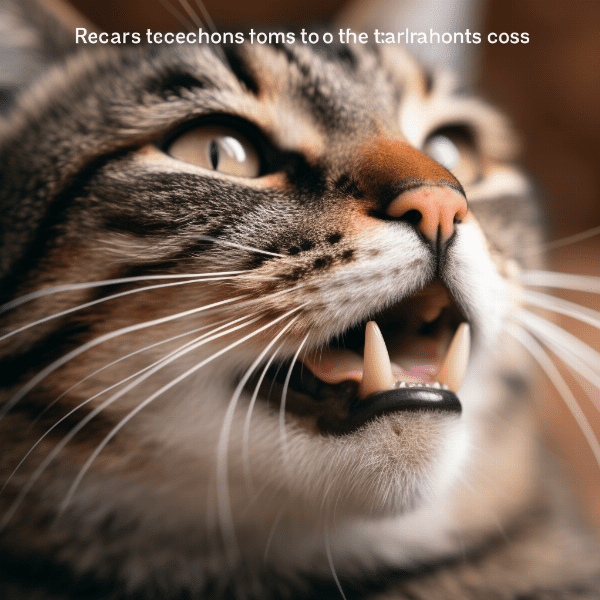Table of Contents
- Understanding Feline Tooth Decay: An Overview
- Causes of Feline Tooth Decay: Diet and Other Factors
- Recognizing the Signs of Tooth Decay in Cats
- Preventing Feline Tooth Decay: Tips and Strategies
- Diagnosing Feline Tooth Decay: What to Expect
- Treating Feline Tooth Decay: Non-Surgical and Surgical Options
- Aftercare for Cats with Tooth Decay: What You Need to Know
Understanding Feline Tooth Decay: An Overview
As a cat owner, it’s important to understand the basics of feline tooth decay in order to keep your furry friend healthy and happy. Tooth decay, or dental caries, is a common problem in cats that can lead to pain, infection, and even tooth loss if left untreated.
How does tooth decay develop in cats?
Tooth decay in cats is caused by the buildup of plaque and tartar on the teeth. When your cat eats, bacteria in the mouth feed on leftover food particles and produce acid. Over time, this acid can erode the enamel of the teeth and lead to cavities.
In addition to poor oral hygiene, there are several other factors that can contribute to feline tooth decay. These include:
- Diet: Cats that consume a diet high in carbohydrates and sugar are more prone to tooth decay.
- Age: Older cats are more likely to develop tooth decay due to wear and tear on their teeth over time.
- Breed: Some cat breeds, such as Siamese and Abyssinians, are more prone to dental problems than others.
What are the symptoms of tooth decay in cats?
In the early stages, tooth decay in cats may not show any obvious symptoms. However, as the condition progresses, your cat may begin to exhibit the following signs:
- Bad breath
- Drooling
- Pawing at the mouth
- Loss of appetite
- Weight loss
- Difficulty chewing or swallowing
- Red, swollen, or bleeding gums
Why is feline tooth decay a concern?
If left untreated, feline tooth decay can lead to serious health problems for your cat. In addition to pain and discomfort, tooth decay can lead to infection and abscesses, which can spread to other parts of the body. Severe cases of tooth decay may even require tooth extraction, which can be a painful and expensive procedure.
In short, taking care of your cat’s teeth is an important part of maintaining their overall health and well-being. By understanding the causes and symptoms of feline tooth decay, you can take steps to prevent and treat this common condition in your furry friend.
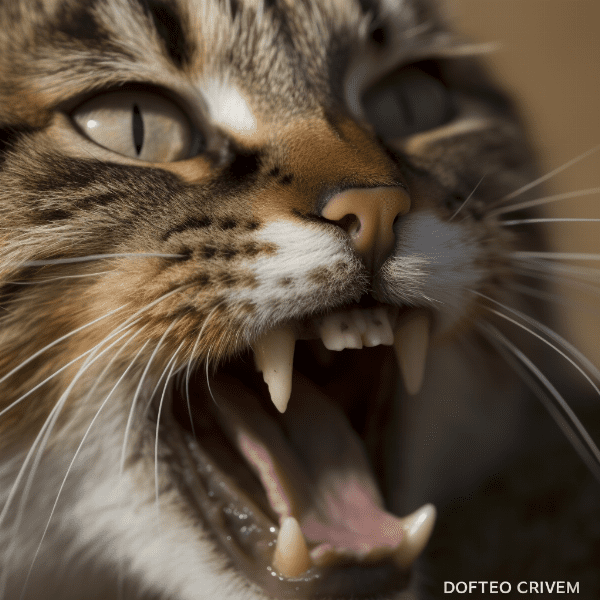
Causes of Feline Tooth Decay: Diet and Other Factors
As mentioned in the previous section, the buildup of plaque and tartar on a cat’s teeth is a primary cause of tooth decay. However, there are several other factors that can contribute to this condition.
Diet
A cat’s diet plays a significant role in their dental health. Cats that consume a diet high in carbohydrates and sugar are more prone to tooth decay. This is because the bacteria in the mouth feed on the sugars and produce acid, which can erode the enamel of the teeth over time. Feeding your cat a diet that is high in protein and low in carbohydrates can help to prevent tooth decay.
Oral Hygiene
Poor oral hygiene is another major factor that can contribute to feline tooth decay. If you don’t regularly brush your cat’s teeth or provide them with dental chews or toys to chew on, plaque and tartar can build up on their teeth and lead to decay. It’s important to establish a regular dental care routine with your cat to prevent tooth decay.
Age
As cats age, their teeth may become more brittle and prone to decay. This is because the enamel on the teeth can wear down over time, leaving the teeth vulnerable to decay. Older cats may also be more prone to gum disease, which can contribute to tooth decay.
Breed
Certain cat breeds are more prone to dental problems than others. For example, Siamese and Abyssinian cats are more likely to develop tooth decay and gum disease than other breeds. If you have a cat that is prone to dental problems, it’s important to take extra care of their teeth to prevent decay.
.
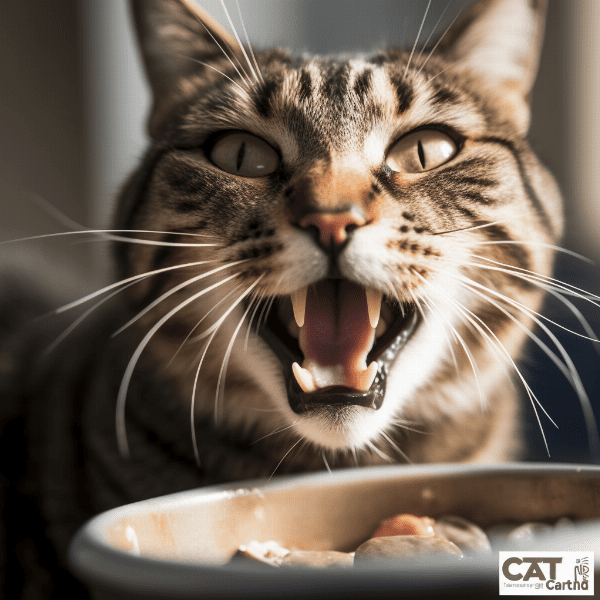
Recognizing the Signs of Tooth Decay in Cats
Tooth decay in cats can be a painful and uncomfortable condition. However, it’s not always easy to recognize the signs of this condition. Here are some common symptoms to look out for:
Bad Breath
One of the most common signs of tooth decay in cats is bad breath. If your cat’s breath smells particularly foul, it may be a sign that they have dental problems.
Difficulty Eating
Cats with tooth decay may have difficulty eating or may avoid certain types of food altogether. This is because chewing can be painful or uncomfortable for them.
Pawing at the Mouth
If your cat is pawing at their mouth or rubbing their face against objects, it may be a sign of dental discomfort. This behavior can be a result of pain or itchiness in the mouth.
Red, Swollen, or Bleeding Gums
In some cases, cats with tooth decay may develop red, swollen, or bleeding gums. This can be a sign of gum disease or infection.
Changes in Behavior
Cats with tooth decay may exhibit changes in behavior, such as increased irritability or lethargy. This can be a result of pain or discomfort associated with dental problems.
Missing or Loose Teeth
As tooth decay progresses, your cat may begin to lose or loosen teeth. This can be a painful and serious condition that requires prompt attention from a veterinarian.
Dental Tartar and Plaque
Regularly checking your cat’s teeth for the presence of dental tartar and plaque is another way to recognize tooth decay. These substances can accumulate on the teeth and lead to decay over time.
In conclusion, recognizing the signs of tooth decay in cats is important for maintaining their dental health. If you notice any of these symptoms in your furry friend, it’s important to seek veterinary attention to prevent further damage and ensure your cat’s comfort.
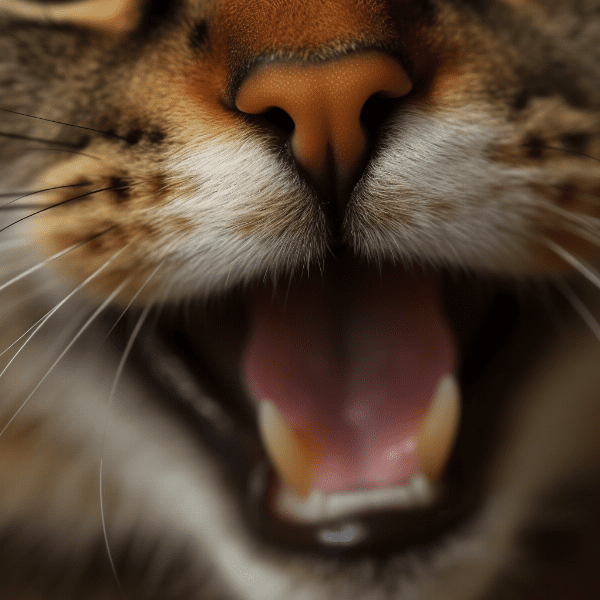
Preventing Feline Tooth Decay: Tips and Strategies
Preventing feline tooth decay is important for maintaining your cat’s overall health and well-being. Here are some tips and strategies to help keep your furry friend’s teeth healthy:
Diet
Feeding your cat a healthy diet that is high in protein and low in carbohydrates can also help to prevent tooth decay. Avoid feeding your cat foods that are high in sugar or carbohydrates, as these can contribute to the buildup of plaque and tartar on their teeth.
Water Additives
Adding water additives to your cat’s drinking water can also help to prevent tooth decay. These additives can help to break down plaque and tartar on the teeth, reducing the risk of decay.
Professional Dental Cleanings
Professional dental cleanings by a veterinarian are also an important part of preventing tooth decay in cats. During these cleanings, your veterinarian will remove any plaque and tartar buildup from your cat’s teeth and check for any signs of dental problems.
Environmental Factors
Reducing your cat’s exposure to environmental factors that can contribute to dental problems, such as cigarette smoke and toxins, can also help to prevent tooth decay.
In conclusion, preventing feline tooth decay requires a combination of regular dental care, a healthy diet, and professional cleanings. By taking proactive steps to prevent dental problems, you can help to ensure that your cat maintains good dental health and overall well-being.
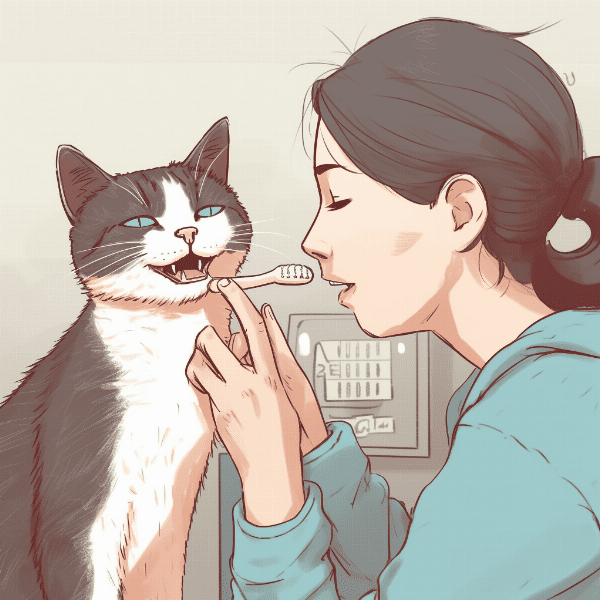
Diagnosing Feline Tooth Decay: What to Expect
If you suspect that your cat may have tooth decay, it’s important to schedule an appointment with your veterinarian for a diagnosis. Here’s what you can expect during the diagnosis process:
Physical Exam
During the initial physical exam, your veterinarian will examine your cat’s teeth and gums for signs of decay or infection. They may also take X-rays to get a better look at the teeth and assess any damage that may be present.
Sedation
In some cases, your cat may need to be sedated in order for your veterinarian to perform a thorough examination of the teeth and gums. Sedation can also help to reduce your cat’s stress and discomfort during the examination process.
Diagnosis
Once the examination is complete, your veterinarian will provide you with a diagnosis and discuss treatment options with you. In some cases, treatment may involve a professional dental cleaning or a tooth extraction. Your veterinarian may also prescribe antibiotics or pain medication to help manage any infections or discomfort associated with tooth decay.
.
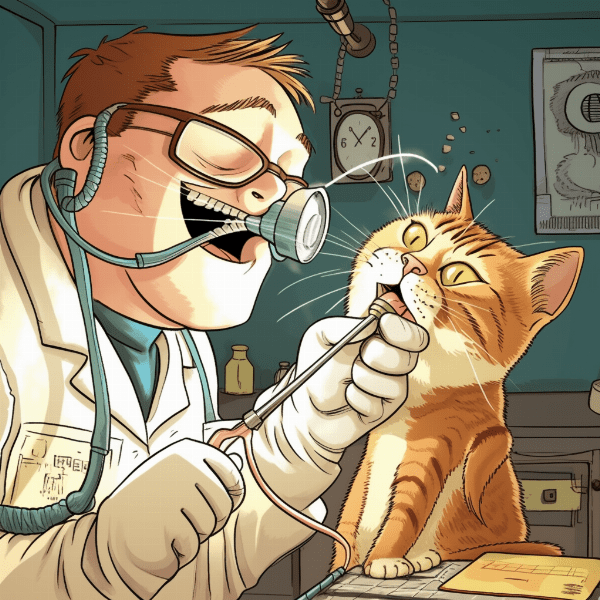
Treating Feline Tooth Decay: Non-Surgical and Surgical Options
Treatment for feline tooth decay will depend on the severity of the condition. Here are some non-surgical and surgical options that may be recommended by your veterinarian:
Non-Surgical Options
Non-surgical treatment options for feline tooth decay may include:
- Professional Dental Cleanings: Professional dental cleanings can help to remove plaque and tartar buildup on the teeth, reducing the risk of decay.
- Antibiotics: Antibiotics may be prescribed to manage any infections associated with tooth decay.
- Pain Management: Your veterinarian may prescribe pain medication to manage any discomfort associated with tooth decay.
Surgical Options
In more severe cases of feline tooth decay, surgical options may be necessary. These can include:
- Tooth Extraction: If a tooth is severely decayed, it may need to be extracted in order to prevent further damage and infection.
- Root Canal: In some cases, a root canal may be performed to save a decayed tooth. This procedure involves removing the infected pulp and replacing it with a filling.
- Crown Placement: Crowns may be placed on a tooth after a root canal to help protect it from further damage.
Home Care
In addition to professional treatment options, home care is also an important part of treating feline tooth decay. This can include establishing a regular dental care routine, feeding your cat a healthy diet, and monitoring their behavior and health for signs of dental problems.
In conclusion, treatment for feline tooth decay can involve a range of non-surgical and surgical options, depending on the severity of the condition. By working with your veterinarian to develop a treatment plan and following their recommendations for home care, you can help to manage this common dental condition and ensure that your cat maintains good dental health throughout their life.
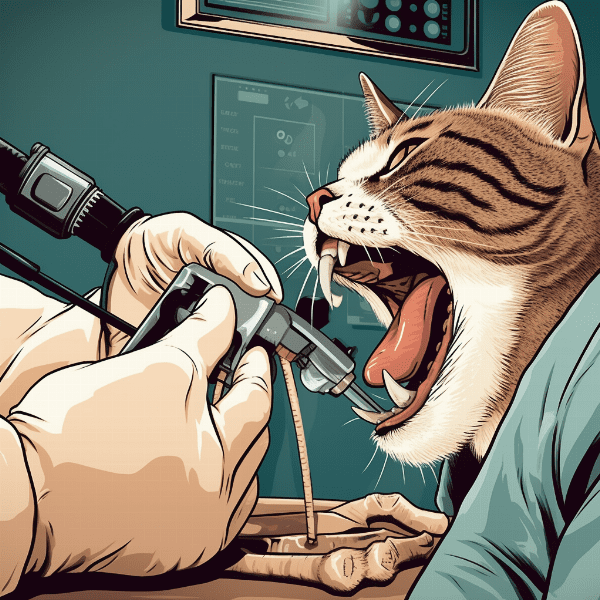
Aftercare for Cats with Tooth Decay: What You Need to Know
Aftercare is an important part of managing feline tooth decay and ensuring that your cat remains healthy and comfortable. Here are some things to keep in mind when caring for your cat after treatment for tooth decay:
Pain Management
If your cat has undergone a surgical procedure, such as a tooth extraction or root canal, they may experience some discomfort or pain during the recovery period. Your veterinarian may prescribe pain medication to manage this discomfort and ensure that your cat remains comfortable.
Diet
After treatment for tooth decay, it’s important to feed your cat a soft diet for a few days to allow their mouth to heal. Soft foods, such as canned or cooked chicken or fish, can be easier for your cat to eat and will help to prevent any discomfort associated with chewing.
Dental Care
Establishing a regular dental care routine is important for preventing future tooth decay in your cat. This can include brushing your cat’s teeth regularly, providing them with dental chews or toys, and scheduling regular dental checkups with your veterinarian.
Behavior and Health Monitoring
Regularly monitoring your cat’s behavior and health is also important for managing tooth decay. If you notice any changes in your cat’s eating habits or behavior, it’s important to seek veterinary attention to address any potential dental problems.
In conclusion, aftercare is an important part of managing feline tooth decay and ensuring that your cat remains healthy and comfortable. By following your veterinarian’s recommendations for pain management, diet, and dental care, you can help to ensure that your cat’s recovery is successful and that they maintain good dental health throughout their life.


